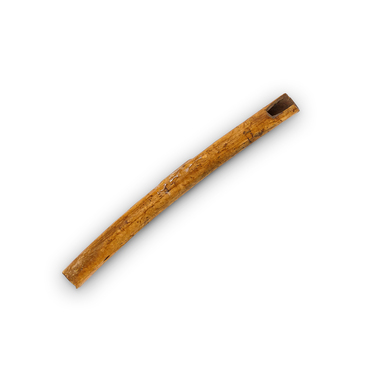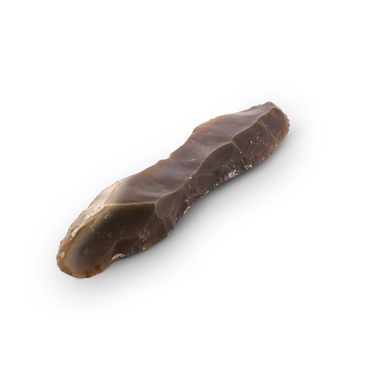The celt displayed at the museum is a type of metal ax dating back to the Bronze Age. The blade was attached to a handle by a rope passed through the eyelets. Although the term “celt” is often associated with the Celtic tribes of the Iron Age, these axes from the Bronze Age bear no connection to the historical Celts.
There is a hypothesis that the term “celt” originated from a scribal error in the Latin Bible: the word celte was a misspelling of the word certe (undoubtedly). Nevertheless, some scholars for many years have considered celte to be a genuine Latin word.
It was once believed that the Latin word celte referred to some kind of ancient chisel. Antique collectors of the 18th century used this term for stone and bronze artifacts they discovered in prehistoric sites. Therefore, this designation has remained in archaeological literature as a term for a specific type of ancient ax.
The unique design of this artifact allowed it to be both attached to a handle and tied to it. Socketed celt axes, with two eyelets, typically featured relief ornaments. Depending on how the handle was connected to the celt, either along or perpendicular to the blade, the weapon could function as an ax or hoe.
Craftsmen cast celts from bronze. They poured molten metal into a clay or stone mold. As a typical celt had a socket, it came in a number of complex shapes.
Archaeological excavations near the city of Voronezh unearthed several workshops dedicated to the production of various types of bronze items. Researchers concluded that there may have been an extensive production facility. This was suggested by the discovery of numerous clay molds, both intact and fragmented. Many of the workshops were likely associated with home production, as each formed part of or was adjacent to a dwelling.
Scientists have determined that axes were produced most frequently, followed by sickles, choppers, knives, flat adzes, and spearheads. Archaeologists found copper ore, frozen metal droplets, slag, remnants of melting bowls, stone pestles, and hammers.



